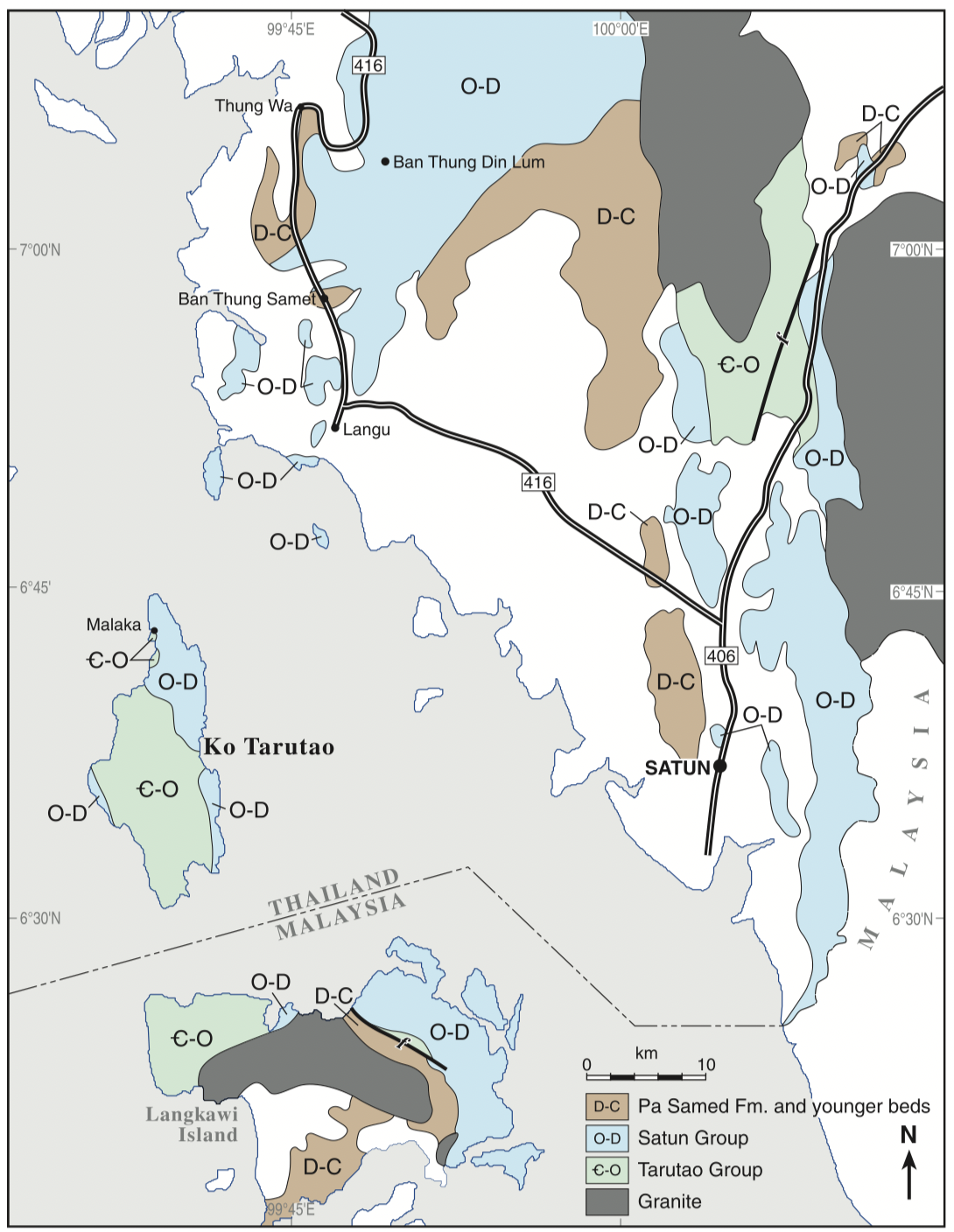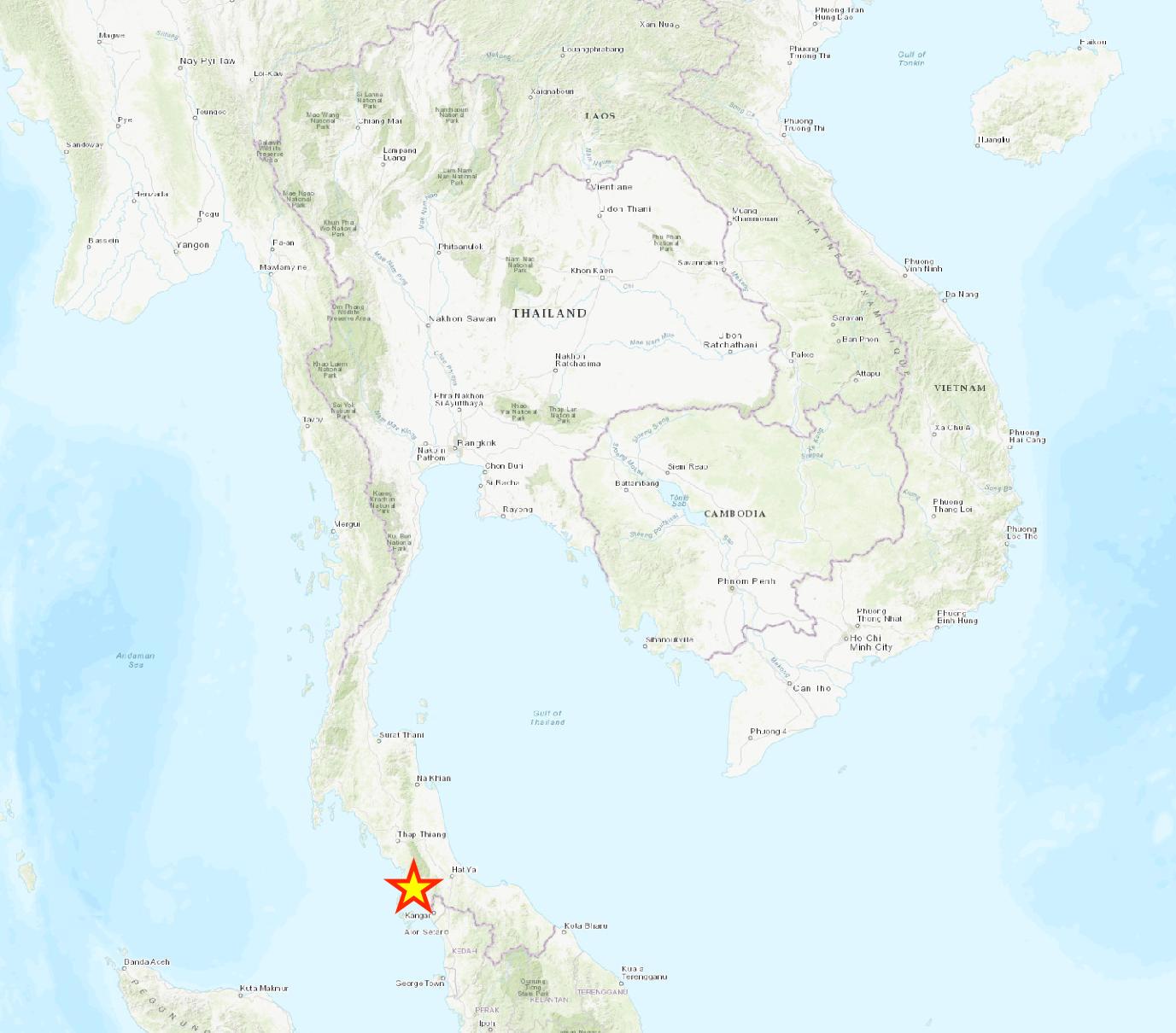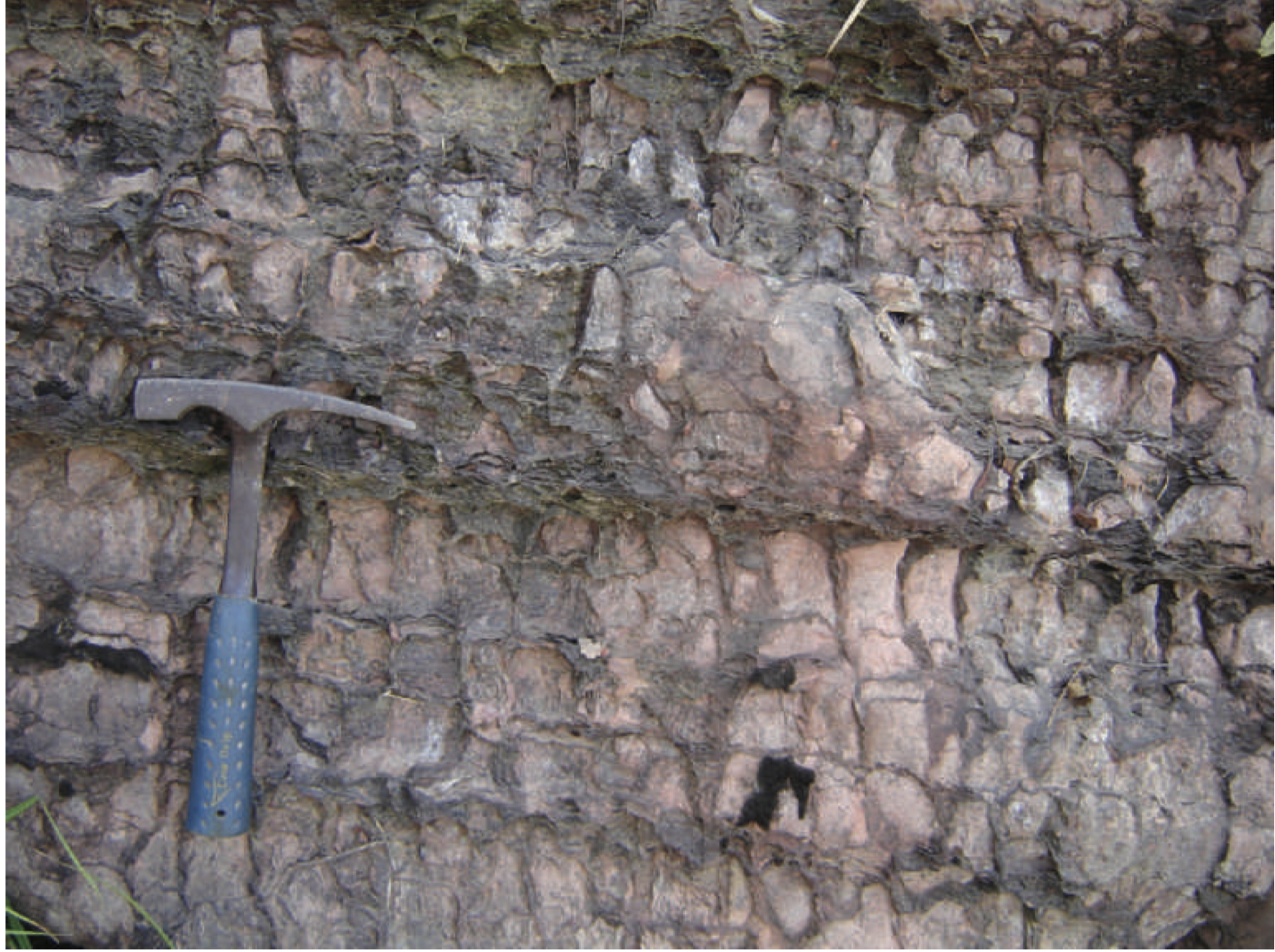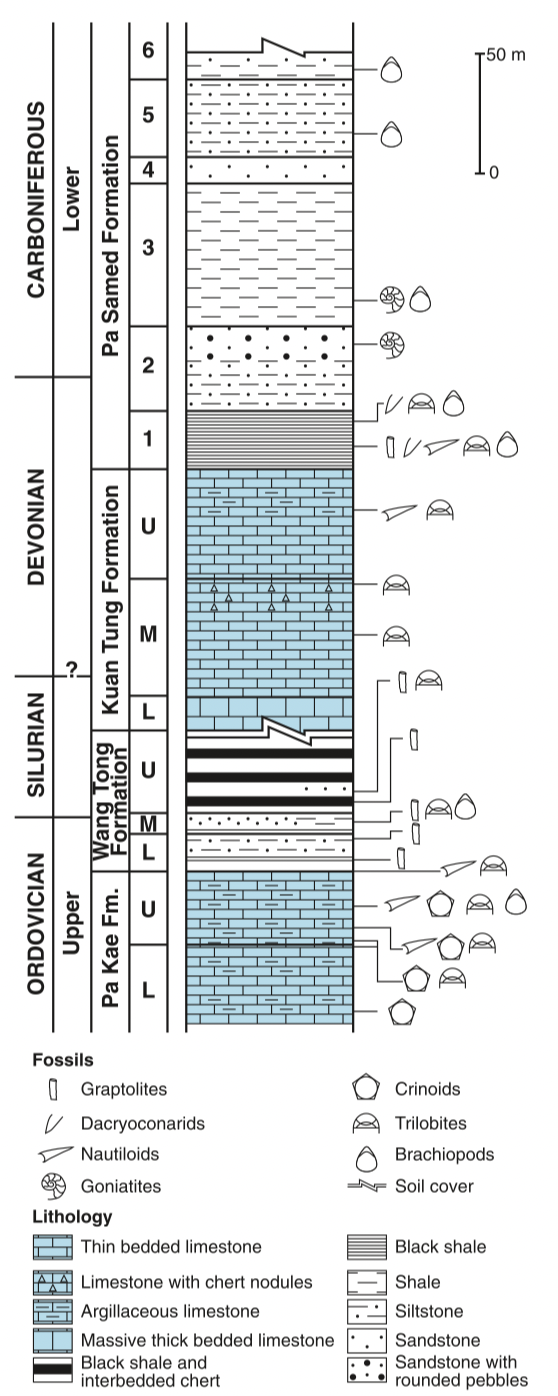Pa Kae Fm
Type Locality and Naming
[Figure: Sketch geological map (from various sources) of the southern part of Peninsular Thailand and Langkawi Island of Malaysia. Note that Thai stratigraphic nomenclature has been extended to Langkawi Island (Ridd. 2011)]
Synonym: หมวดหินป่าแก
Lithology and Thickness
Parent unit: Top-most unit of the Thung Song Gr (Wongwanich and others, 1990), but Ridd (2011) also assigned it to the Satun Gr.
Thickness: 66 m at the type section, 126 m thick at Petra National Park
[Figure1: Upper Ordovician Pa Kae Formation; pale pink to grey limestone dipping gently to the right, with characteristic network of non-calcareous mineral, possibly caused by clay-filled pressure-solution cracks. East of Langu-Thung Wa road at about 6858 0 34 00 N, 99846 0 28 00 E (Ridd, 2011).]
[Figure2: Composite stratigraphic section of the Upper Ordovician to Carboniferous near Ban Thung Samet, between Km 10 and Km 11 on the Langu to Thung Wa road in Satun Province. From Ridd (2011), which is modified after Wongwanich et al. 2002).]
Relationships and Distribution
Lower contact
Upper contact
Regional extent
GeoJSON
Fossils
Age
Depositional setting
Additional Information
Lexicon of Stratigraphic Names of Thailand of 2013.



